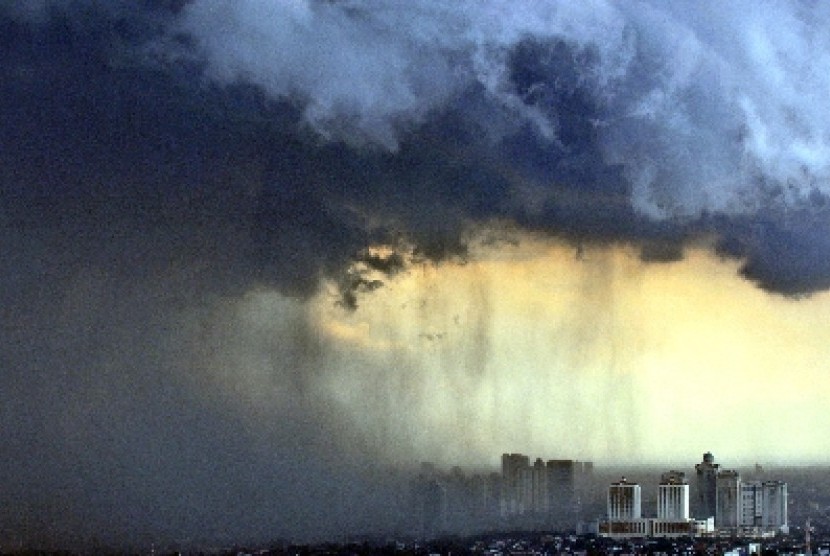REPUBLIKA.CO.ID, JAKARTA -- The Meteorology, Climatology, and Geophysics Agency (BMKG) has forecast that weak El Nino would likely be felt between July and August, and its impact will be apparent in August.
Since March and continuing into June, the sea's surface temperature in Indonesian waters has been relatively warm, so that water vapor reserves in Indonesia's areas are adequate, Head of BMKG Andi Eka Sakya said, as quoted on the website of the Cabinet Secretariat here recently.
"The El Nino phenomenon in 2014 will not be as bad as that in 1997, and the drought will be less than in 1997. But the El Nino phenomenon this year will delay the start of the rainy season in 2014 and 2015, especially in the eastern parts of Indonesia," he said.
El Nino is a peculiar phenomenon in sea conditions, which is marked by the increase in sea surface temperature (SST) in the Pacific Ocean around the equator, known as the equatorial Pacific Ocean, especially in the central and eastern parts of the equatorial Pacific Ocean around the coasts of Peru.
Since the ocean and the atmosphere are closely interconnected, this peculiar phenomenon in sea conditions causes changes in atmospheric conditions which result in deviations in climate.
In normal weather conditions, the sea surface temperature in the areas around Indonesia are generally warm and, therefore, evaporation can easily take place as rainy clouds are formed.
However, when the El Nino phenomenon happens, and when the sea surface temperature in the central and eastern parts of the equatorial Pacific Ocean becomes warmer, the temperature in the waters around Indonesia decreases from its normal condition.
As a result, the circulation of air masses will change and reduce the formation of rainy clouds in Indonesia.
BMKG's Deputy for Climatology, Widada Sulistya, said that the peak of the eastern winds would occur in June, July, and August in the southern areas.
He mentioned that, presently, the Asian monsoons are relatively weak and will cause a high possibility of rain cloud formations in the areas around Sumatra.
Meanwhile, the Australian monsoon index shows that the Australian monsoon is still strong. "This certainly indicates that cloud formations around Java, Bali, and Nusa Tenggara are declining," he explained.


